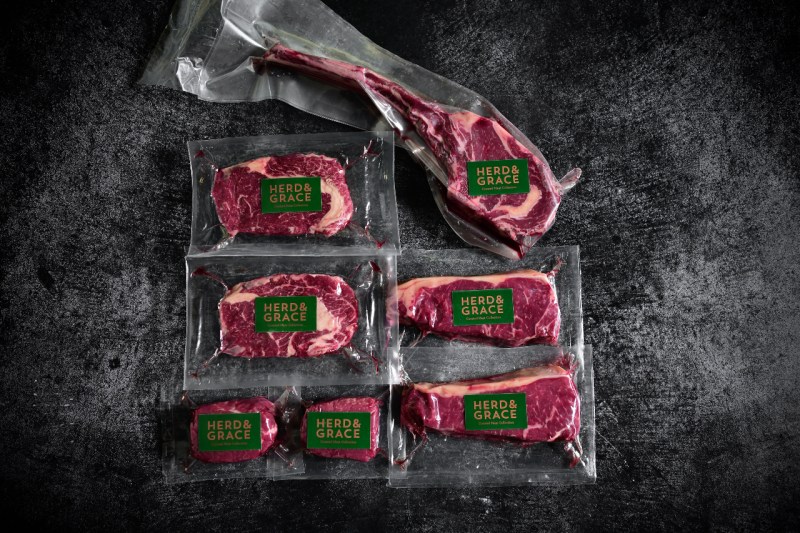
While America might be infamous for its red meat culture of steaks, burgers, and world-class Texas brisket, it’s not the only country with amazing beef. With their vast landscapes and pristine environments, Australia and Tasmania produce some of the highest-quality beef and lamb in the world — and with a different ecosystem and a unique method of cattle rearing, Australian beef is in a league of its own.
One company, Herd & Grace, delivers that Australian quality directly to the comfort of your home. From barley-fed Black Angus beef to Tasmanian-raised fullblood Wagyu, Herd & Grace previously only provided its top-tier meat to Michelin-starred restaurants. Now they’re delivering that high-class animal protein to customers, allowing home cooks to enjoy this world-class meat for themselves.
What makes Australian and Tasmanian beef unique?
According to Svante Johansson, president of Herd & Grace, one of the key factors that separate Australian and Tasmanian beef is the unique ecosystem of the continent.
“Tasmania has the perfect ecosystem for pasture-raised livestock: 180–200 days of annual rainfall, volcanic soil, and the cleanest air in the world blowing in from the ocean,” said Johansson. “This combines to provide an environment where the animals can grow up to four pounds per day solely eating high-quality grass.”
The Australian MSA meat grading system is also different compared to the American USDA system. In America, the USDA grading system only accounts for marbling — USDA Prime, Choice, and Select — all in descending order of the abundance of marbling. Marbling is also factored into Australian MSA grading, but that’s just one part of the system; MSA also takes into account breed, age, color, PH level, and hormones (meaning that if the cattle is administered hormones, points are deducted).

The steak cuts
Herd & Grace features four different types of beef available on its website: Robbins Island Tasmanian Wagyu, Wanderer barley-fed beef, Cape Grim grass-fed beef, and Pure Black barley-fed Angus. A large selection of steak cuts, including ribeye to rump to outside skirt steak, is available under the different beef types. The flavor and texture of each category are also distinct, with differences present in marbling and beef flavor. For instance, the fullblood Wagyu will feature more marbling and fat, while the Cape Grim will have a slightly gamey flavor that’s distinctive in 100% grass-fed beef.
One intriguing description that stands out is the classification of barley-fed. According to Johansson, feeding cattle barley has several benefits over grain-fed beef common in America.
“Barley contains less sugar than corn, so therefore, the meats tend to have a very beefy flavor profile,” said Johansson. “Also, barley, for some reason, produces a clean but fatty flavor profile; Japanese Wagyu is barley fed. The result is a very luxurious eating experience.”
But being barley-fed is not the only unique aspect of Herd & Grace beef. Both Pure Black and Wanderer beef uses what’s called “tenderstretched,” which is a technique used to tenderize meat. After harvesting and before processing, most beef carcasses are hung by the hoof for 48 hours. The reason? To save space in the cooler, which often contains hundreds of animal carcasses. When a carcass is tenderstretched, it’s hung by the hip, allowing the carcass to stretch out and tenderize in a natural position. This method is especially effective for beef cuts in the middle of the cow, including ribeye, strip loin, and tenderloin.

How to cook Australian and Tasmanian beef
With so many options in terms of types of beef and cuts at Herd & Grace, how does one choose a favorite? While individual tastes will vary, Johansson gladly shared his preferred steak cuts.
“My personal favorites are the Cape Grim New York steak, the Pure Black Cowboy steak, and, of course, the Robbins Island ribeye steak,” said Johansson. “Each cut represents the absolute best product in its category: grass-fed, barley-fed, and fullblood Wagyu.”
Like all high-quality beef, the key to enjoying the pure flavor of the various Herd & Grace cuts is by using good salt and not overcooking the meat. Simply cook the beef using your favorite method — grilling or searing in a hot cast-iron skillet are great. Since the meat is vacuum sealed, pat off the moisture before cooking for the best sear. Also, it’s critical to bring the steak to room temperature before cooking. After the steak is finished cooking, Johansson recommends letting it rest for at least five minutes to let the natural juices distribute evenly throughout the muscle. The last thing you want is all that meaty goodness leaking out before you even take a bite.
If you’re looking for unadulterated beef flavor, Johansson recommends cooking the beef with salt and nothing else. For an added flourish, use a good finishing salt for some additional texture and salty flavor. If you’re looking for more spice and sauce in your life, Herd & Grace also features its own recipes on its website for rich compound butter, sauces, and condiments. The Pure Black flap steak is paired with a smoky, tangy, spicy Romesco sauce full of peppers, garlic, and spices. The impressive Cape Grim tomahawk ribeye is amazing with spicy, herbaceous chimichurri hot with crushed red pepper. Free feel to experiment; that choice is what makes enjoying this beef so satisfying.



